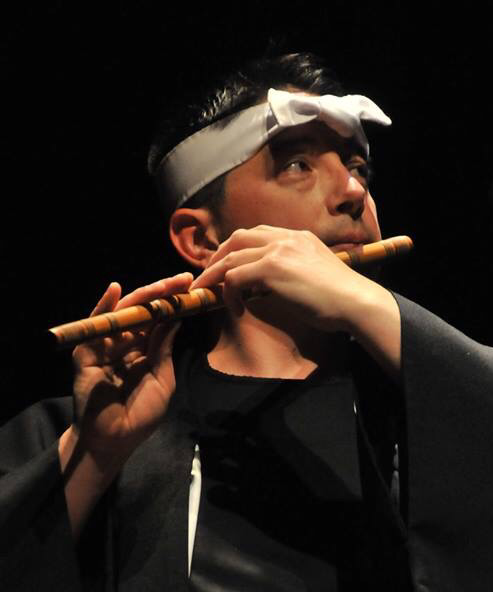Shinobue Journey
- Kokichi Kusano

- Apr 21, 2015
- 3 min read
My own journey of learning to play the shinobue began when I was 5 years old as a member of the Toronto Suwa Daiko in 1983. Though the group, to my recollection, did not use shinobue back then, I remember that I took an interest in the sounds of the Japanese flute from that time. Along with the annual Kohaku Utagassen, where my grandparents would spend untold hours taping enka music each year for karaoke parties (the Kohaku Utagassen or ‘Red and White new year’s show’ as it might be known in English is an annual New Year’s celebration televised internationally from Japan that features hours of popular music) – I began to hear and adopt a strong love for the sound of both taiko and Japanese flutes as they made an impression on from a young age.

Seeing this interest, my mother borrowed a silver flute for me from one of the members at the time. The flute remained in my possession for several years, during which time I learned to play in both school and private lessons. The trouble was I wasn’t incredibly interested in the silver flute at all; in fact, it just wasn’t making the sounds I wanted to hear. Still, believing it would serve as a solid foundation for the pursuit of my real passions (the shakuhachi and shinobue), I continued on for some years.
It was some years later, that like so many other members of a local taiko group who show an ability to make a sound on a flute, I was handed a flute and told to practice up for that ‘stand in the back at the microphone flute part’. A lot of flute players in taiko groups develop from this sort of thing. But in later years as I moved from the temple’s local group to stepping onto the stage as a professional musician, the shinobue took on new meaning.
Make no mistake, for me the taiko was always a central part of developing as a musician, but unlike the taiko, which you cannot take it with you in a back pack and play in a particularly acoustic hallway or stair case. In this way, the shinobue has been with me through many journeys.
I’ve never regretted having the shinobue by my side. Thanks to these simple yet elegant flutes, I’ve met and worked with great musicians, improvised that balancing interlude solo between percussive pieces in countless concerts and unlike so many taiko players who rarely get the chance to stray from the confines of their repertoire – I’ve always had that melodic companion to give my music color it could not otherwise have.
The shinobue is an easy instrument to pick up and learn as it doesn’t require a great deal more than itself, ten fingers, and a pair of lips. But, that doesn’t make it too easy to be worthwhile. Quite the contrary, as with any instrument, the shinobue continues to confront me with new challenges – many more today than I could have imagined so many years ago. I recommend it to anyone seeking an instrument to play, to any and all taiko players, and certainly to anyone who loves Japanese music.
If you have an interest in learning about the shinobue, feel free to contact me and send a question or comment. I’m always happy to discuss. And if you are looking for one, please check out www.wagakkicanada.com for selected instruments imported from Japan. If you are interested in learning to play the shinobue directly, please visit the application page here.
-Kokichi




Comments